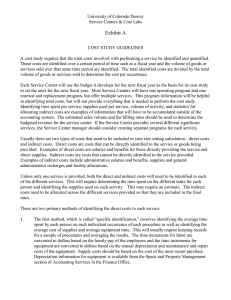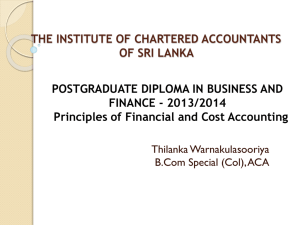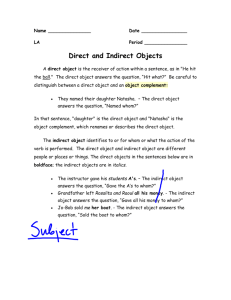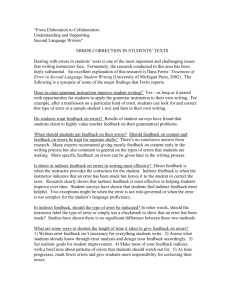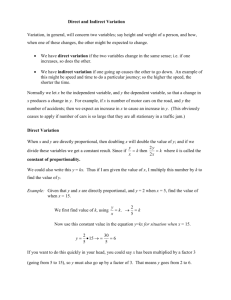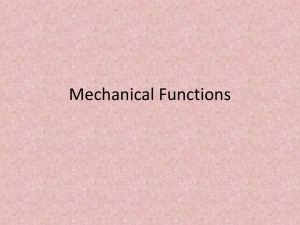Cost Study Guidelines - University of Colorado Denver
advertisement
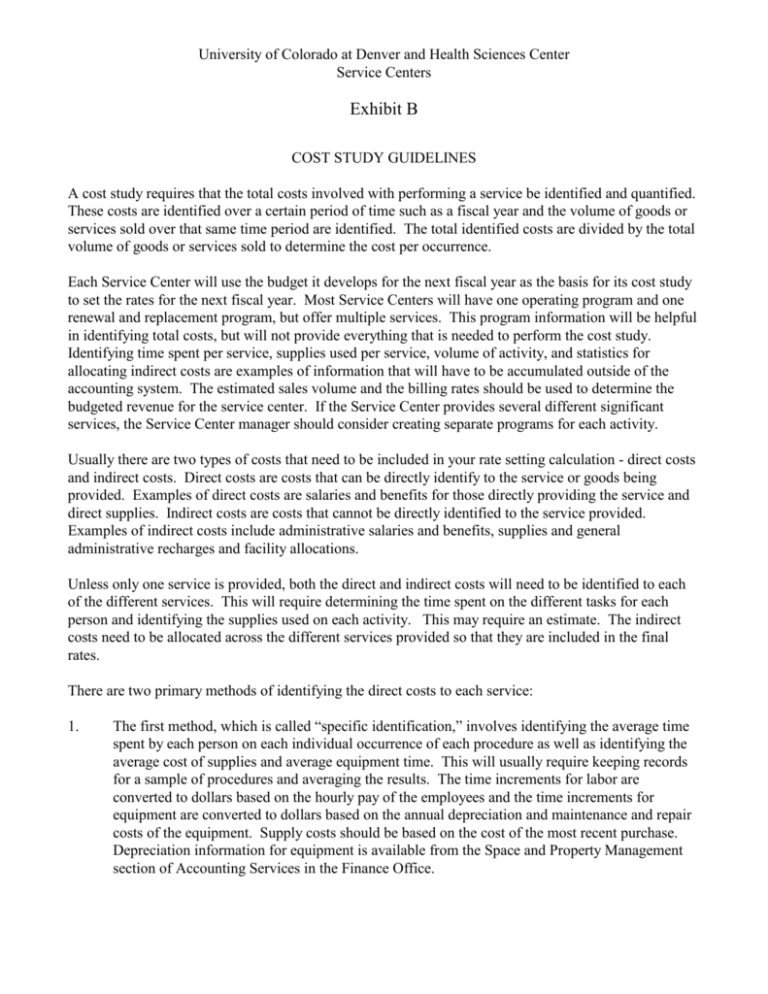
University of Colorado at Denver and Health Sciences Center Service Centers Exhibit B COST STUDY GUIDELINES A cost study requires that the total costs involved with performing a service be identified and quantified. These costs are identified over a certain period of time such as a fiscal year and the volume of goods or services sold over that same time period are identified. The total identified costs are divided by the total volume of goods or services sold to determine the cost per occurrence. Each Service Center will use the budget it develops for the next fiscal year as the basis for its cost study to set the rates for the next fiscal year. Most Service Centers will have one operating program and one renewal and replacement program, but offer multiple services. This program information will be helpful in identifying total costs, but will not provide everything that is needed to perform the cost study. Identifying time spent per service, supplies used per service, volume of activity, and statistics for allocating indirect costs are examples of information that will have to be accumulated outside of the accounting system. The estimated sales volume and the billing rates should be used to determine the budgeted revenue for the service center. If the Service Center provides several different significant services, the Service Center manager should consider creating separate programs for each activity. Usually there are two types of costs that need to be included in your rate setting calculation - direct costs and indirect costs. Direct costs are costs that can be directly identify to the service or goods being provided. Examples of direct costs are salaries and benefits for those directly providing the service and direct supplies. Indirect costs are costs that cannot be directly identified to the service provided. Examples of indirect costs include administrative salaries and benefits, supplies and general administrative recharges and facility allocations. Unless only one service is provided, both the direct and indirect costs will need to be identified to each of the different services. This will require determining the time spent on the different tasks for each person and identifying the supplies used on each activity. This may require an estimate. The indirect costs need to be allocated across the different services provided so that they are included in the final rates. There are two primary methods of identifying the direct costs to each service: 1. The first method, which is called “specific identification,” involves identifying the average time spent by each person on each individual occurrence of each procedure as well as identifying the average cost of supplies and average equipment time. This will usually require keeping records for a sample of procedures and averaging the results. The time increments for labor are converted to dollars based on the hourly pay of the employees and the time increments for equipment are converted to dollars based on the annual depreciation and maintenance and repair costs of the equipment. Supply costs should be based on the cost of the most recent purchase. Depreciation information for equipment is available from the Space and Property Management section of Accounting Services in the Finance Office. University of Colorado at Denver and Health Sciences Center Service Centers 2. The second method of identifying direct costs is called the “gross” method. With this method, costs are identified over a period of time (usually at least six months). It requires identifying percentages of time that employees spend with each type of procedure, the percentage of supplies used for each type of procedure and the percentage of time equipment is used. This method is normally used when there are not many different procedures and if people, supplies, and equipment can be easily identified to each type of procedure. The percentages are converted to dollars based on the total salaries and benefits of the individuals, the total dollars spent on supplies, and the total depreciation and maintenance of equipment. There are three primary methods that can be used to identify indirect costs: 1. The first method is to use a percentage mark-up. This method is often used in re-sale operations such as a bookstore or pharmacy. The total identified indirect costs would be divided by the total identified direct costs for all tasks performed by the service center. This percentage would then be multiplied times the direct cost billing rate and the result added to the direct cost billing rate to derive a total rate. 2. The second method of allocating indirect costs is similar to the percentage mark-up but requires identifying the total direct costs for each service, derive a percentage relationship to total for each of the direct cost sub-totals, and apply these percentages to the total indirect costs. The results are then added to the total direct costs for each service to calculate a total billing rate. 3. The third method is to attempt to identify the indirect costs to each service being provided based on some allocation statistic such as square feet used or time spent. Indirect costs for each service would then be added to the direct costs to derive a total rate per service.
